After the farrowing room, the nursery is the most expensive area on the sow farm. Depending on how much technology is used, it can even reach or exceed the cost of the farrowing room.
It could not be any other way: separation from the dam is undoubtedly the most critical moment in a pig's life. The earlier it occurs, the more critical it is, which is why they need the right environment.

Remember, a three- to four-week-old piglet's energy intake and immune defenses depend almost exclusively on the milk it receives from the sow. In fact, the piglet can't digest significant amounts of feed and its digestive enzymes are still incomplete, which makes the first days after weaning critical, and insufficient energy intake can trigger dangerous reactions, especially in a "climatically" unsuitable environment.
For these (and other) reasons, the younger the weaning age, the greater the care (and investment) needed to manage the environment (and the animals).
Hence the importance of planning and creating a nursery environment appropriate for the age and number of piglets. However, it often happens (due to improper planning, overproduction, improved productivity, etc.) that the available space is insufficient, so alternative solutions are sought.
How to create or use an "alternative" environment for weaning
There are several examples, such as this farmer who proposes adapting a "standard" environment (gestation, gilt development) for the weaned piglets.
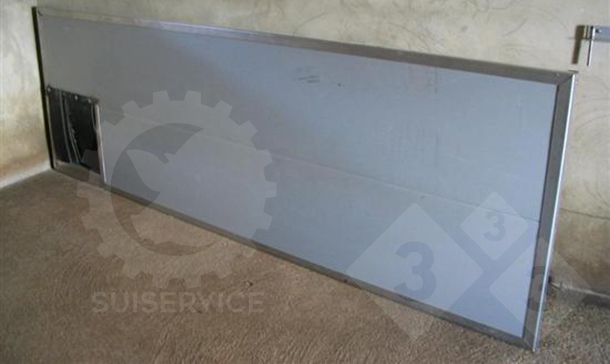
The panel that delimits the "nest" is made of plastic material fixed by a steel ring. There is an opening in one corner with "curtains" for the piglets to pass through.
The environment consists of a pen divided into two areas (an indoor resting area and an outdoor defecation area), which has been adapted by using a panel with an opening, delimiting an area with shavings for bedding and a gas lamp for heating. In this "nest" the piglets rest and warm up. Immediately outside (but still in the indoor area) is a trough for dry feed and drinkers.
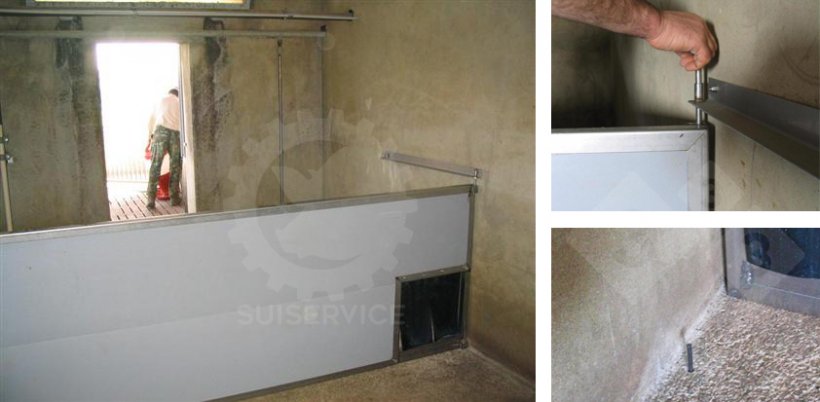
The panel is fixed by a pin that holds it to a rod screwed to the wall, which has two positions. On the floor, a rod holds the panel in place. Immediately after weaning, the panel is fixed in the first position, enclosing a rather small nest, and after a few days, as the piglets grow, it is moved to the second position.
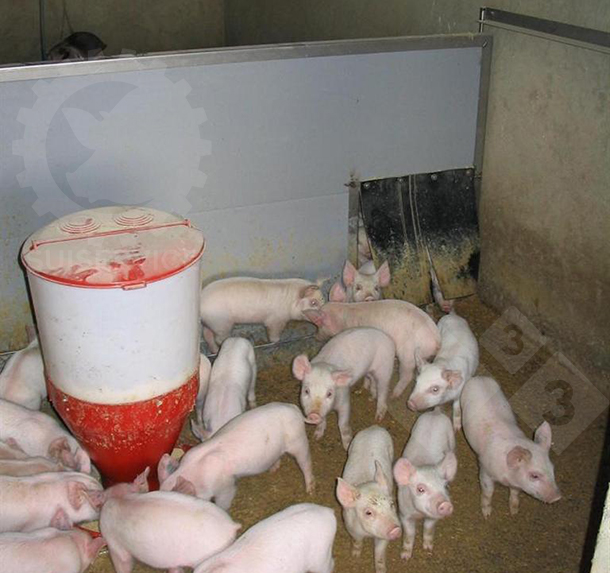
Outside the nest, but still in the inner area of the pen, is a circular feeder with dry feed and drinkers.
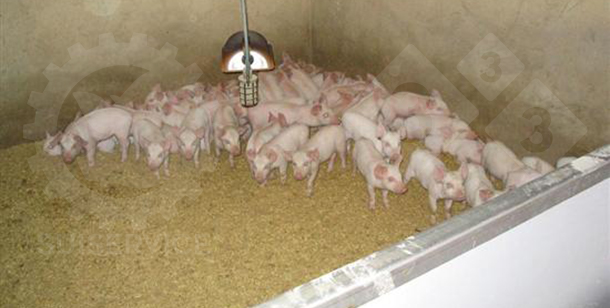
The nest is a comfortable place for the newly weaned piglets, equipped with a heat lamp and fresh, dry shavings on the floor.
The outdoor pen area with a slatted floor is available as a defecation area.
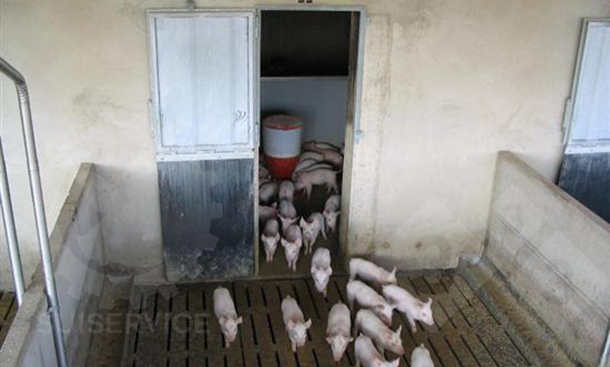
The outside area has a slatted floor and side feeders for liquid feed.


